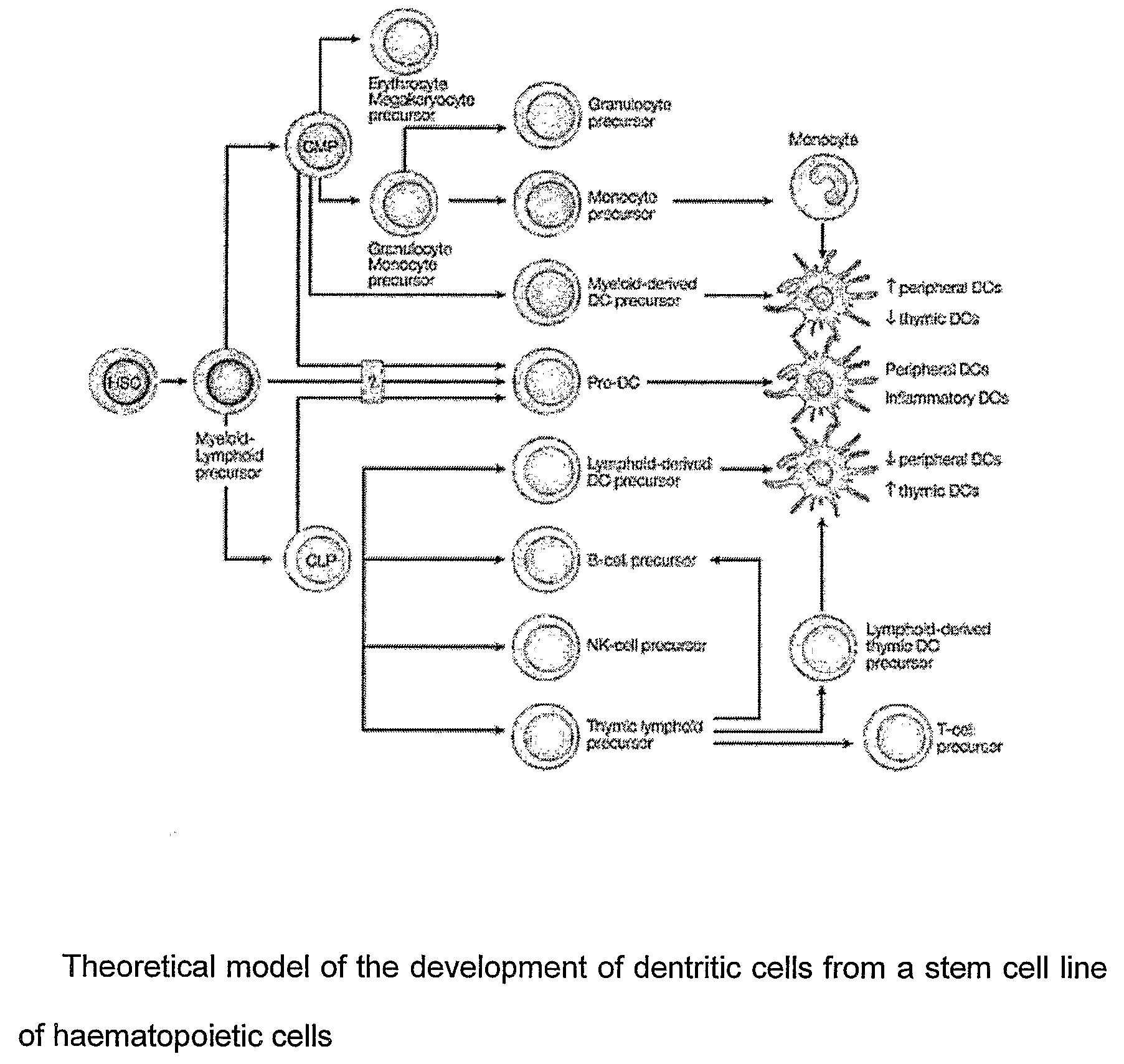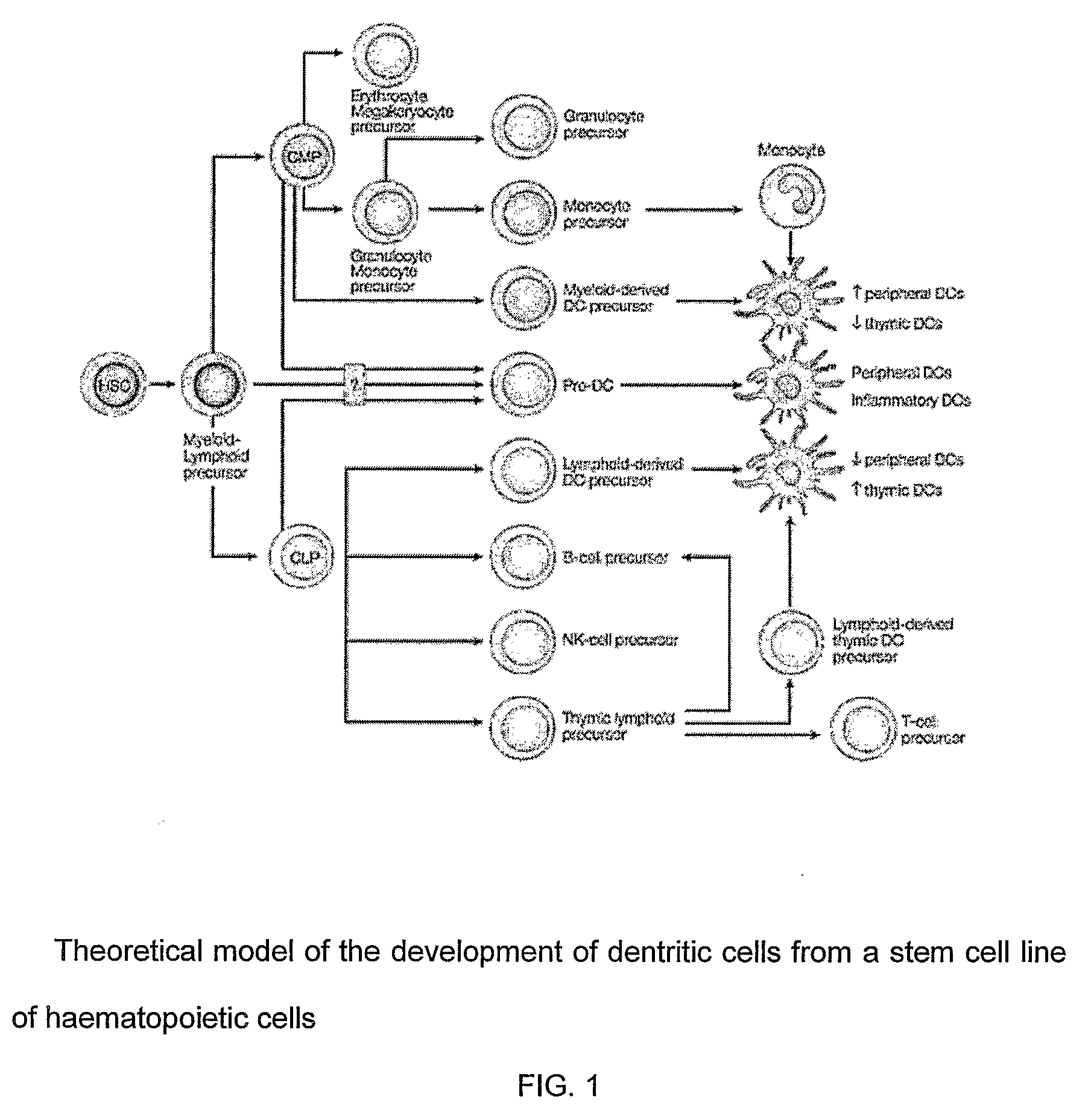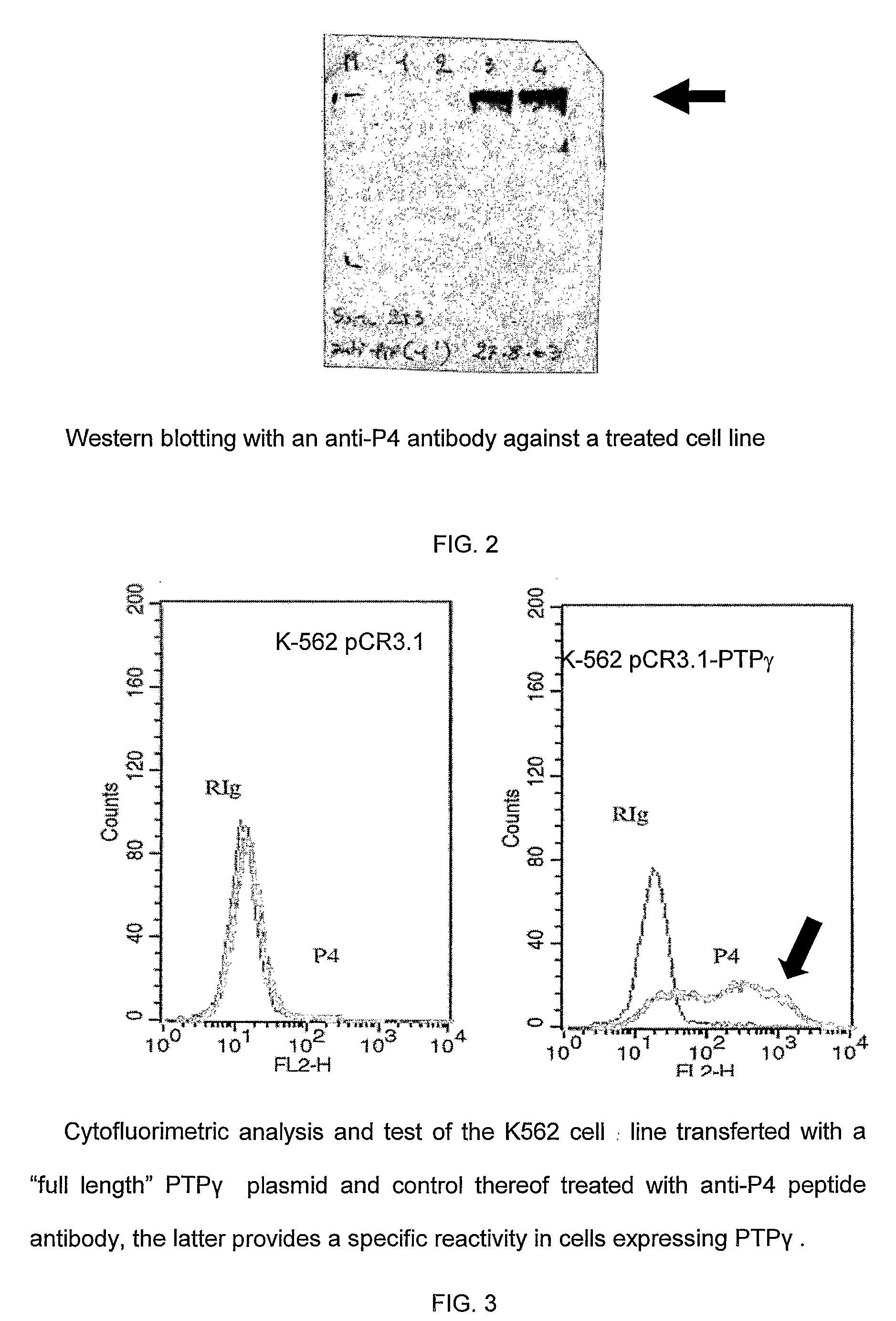Antibody and method for identification of dendritic cells
a dendrite cell and antibody technology, applied in the field of dendrite cell antibody and method identification, can solve the problems of inability to achieve the goal, the early development steps of dc formation from hematopoietic progenitor cells are not uniform, and the identification of dc by a single specific marker has not been possible. achieve the effect of low cost, quick and effectiv
- Summary
- Abstract
- Description
- Claims
- Application Information
AI Technical Summary
Benefits of technology
Problems solved by technology
Method used
Image
Examples
Embodiment Construction
[0072]As will appear more clearly in the “MATERIAL and METHODS” section, the Receptor type Tyrosine Phosphatase Gamma Protein, hereinafter indicated as PTPRG or PTPg, is a new specific marker of myeloid or plasmacytoid dendritic cells, both stimulated and unstimulated.
[0073]This marker is expressed on the surface of the mammalian DCs and its level of expression is related both / either on the activation and / or differentiation state of the same DCs.
[0074]Before the present invention it was unknown that PTPRG is selectively expressed by mammalian myeloid or plasmacytoid DCs.
[0075]Today almost 100 PTP are known (Van Huijsduijnen 1998). Molecular cloning studies have revealed the existence of a large PTP superfamily containing enzymes characterized by two or three well conserved tyrosine phosphatase domains. The PTP superfamily consists of classical PTPs, dual specificity (DSPs) and low molecular weight (LMPs) phosphatases. Classical PTPs exist in transmembrane forms (receptor-type PTPs o...
PUM
| Property | Measurement | Unit |
|---|---|---|
| time | aaaaa | aaaaa |
| time | aaaaa | aaaaa |
| pH | aaaaa | aaaaa |
Abstract
Description
Claims
Application Information
 Login to View More
Login to View More - R&D
- Intellectual Property
- Life Sciences
- Materials
- Tech Scout
- Unparalleled Data Quality
- Higher Quality Content
- 60% Fewer Hallucinations
Browse by: Latest US Patents, China's latest patents, Technical Efficacy Thesaurus, Application Domain, Technology Topic, Popular Technical Reports.
© 2025 PatSnap. All rights reserved.Legal|Privacy policy|Modern Slavery Act Transparency Statement|Sitemap|About US| Contact US: help@patsnap.com



